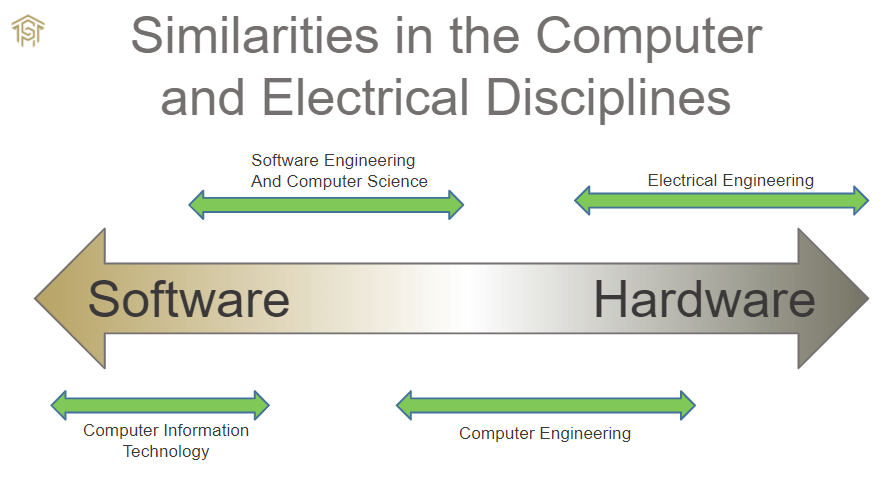
We often get students who say “I want to work with Computers” or “I want to work with Electronics.” “Working with Computers” is so broad that it could mean your day job consists of doing 100% and never touching anything other than a mouse and keyboard, or soldering microchips to circuit boards. This post will help differentiate the certificate and degree programs offered in each are here at Central Piedmont.
On the left side of the scale above we have Computer Information Technology also known as IT. We have an entire division devoted to different IT certificates and degrees. They include fields such as Business analysts, Database Development, Digital Forensics (protect from hackers), Networking Administration, Full stack programming (front-end and back end web development) Software development, and Cloud technologies. Some classes even help you earn industry certifications CompTIA and Cisco. You can see all the different programs here. These 2-year Applied Associate of Arts (AAS) programs will be all computer coding and configuration with little to no hardware involved.
Next we have Computer Science, also known as Software Engineering depending on the university. These programs are 4-year transfer options only. Graduates of Central Piedmont’s transfer degree would expect to join a University program and earn a Bachelors of Software Engineering (B.SE) or Bachelor of Science in Computer Science (BSCS). Many of Central Piedmont’s Associate of Science (AS) students transfer to the University of North Carolina at Charlotte’s Computer Science department. With these degrees, typically the computer hardware is purchased and students are using and configuring it if any is used at all.
Then we have Computer Engineering and Computer Engineering Technology. These are two different fields fields (Please see our previous post on this.) These programs begin to introduce more circuit elements into the curriculum. Students may be soldering together different circuit boards as well as writing a lot of the software to control them. Engineering students will design processors while Engineering Technology students will design digital circuits and program processors among other techniques. Central Piedmont offers the Associates in Engineering (for computer engineering) and Computer Engineering Technology programs to train students in these fields.
Electrical Engineering, Electrical Engineering Technology, and Electronics Engineering Technology. These fields deal more with electrical circuitry and electrical power distribution. Topics may also include process and motor control systems. Again, please see our page describing how these programs differ from one another. Electrical Engineering students would be in the Associates in Engineering program. For students who want to work after 2 years AND transfer to a university to finish a Bachelors in Engineering Technology (BSET), we offer the Electronics Engineering Technology program. For student who would like to move into industry as fast as possible or are interested in the power industry and control systems (such as used in automation controls) we offer the Electrical Engineering Technology program. While students in these three program will still learn to program, much of the focus is on the design, implementation, maintenance and control of hardware. Building the circuits that power our world.

You must be logged in to post a comment.